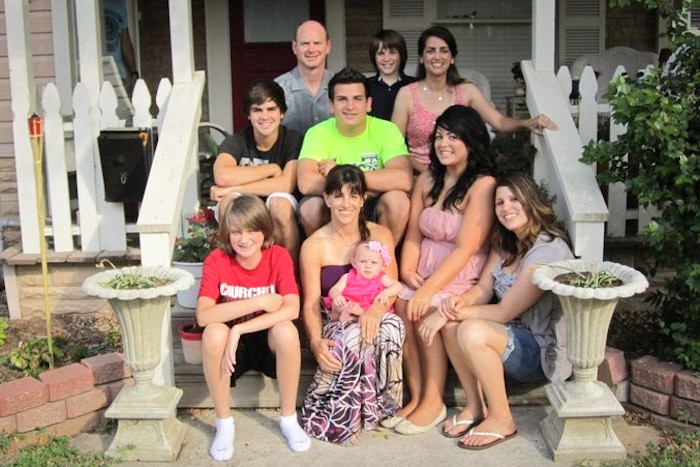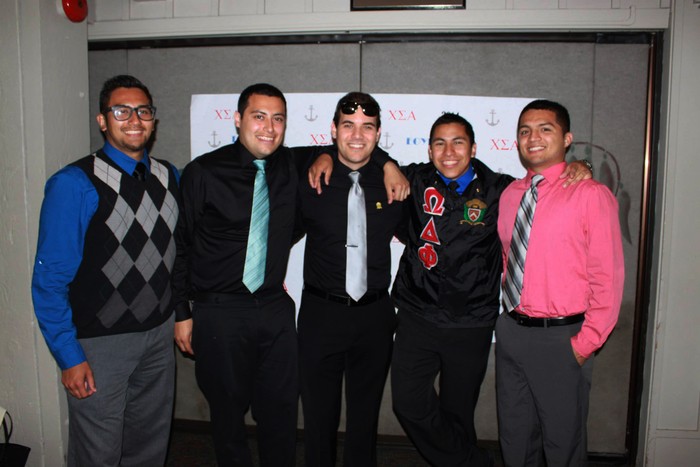
As I was cruising through a job application form recently, I was stopped in my tracks by one question in particular:
“What ethnicity do you identify with?”
There were six options, but I wasn’t supposed to pick more than one. I had the choice of being Hispanic, white (not Hispanic), black (not Hispanic), Asian (not Hispanic), Native American (not Hispanic), and Pacific Islander (not Hispanic).
Like millions of other American’s, I’m biracial – my father is white and my mother is Hispanic. I cannot pick just one race to identify with without throwing out half of my family.
Its not like this is the first time this has come up. But it had been awhile, and I was under the impression that it was now acceptable to belong to two or more ethnicities on paper. Yet here I was, deciding which side of the family to pledge my allegiance.
As I pondered my own identity, I sifted through my childhood memories. Most of them involved my white family. Yet throughout my childhood, there were three constants: family, tortillas and beans.
In the end, I decided that I would be Hispanic for the day, since it seemed pretty inaccurate to say that I’m “white (not Hispanic)” because I am, erm, also Hispanic.
Still, I felt guilty. I have heard complaints that people who are marginally ethnic will identify as being an ethnic minority on paper, possibly for the benefits. It’s often perceived that ethnic minorities get preferential treatment by employers or schools striving for diversity or equal opportunity.
But that doesn’t mean that biracial applicants are playing the system — we’re just being honest about who we are!
According to the University of Washington Office of Enrollment, only 8.5% of UW students mark two or more ethnicities. Only 2.9% of Americans marked multiple race categories on the most recent Census. Both numbers seem to me to be under-representative of the actual population of biracial people.

The thing is, I’m just as Hispanic as I am white — but I’ve been conditioned from adolescence to think that I’m simply white because people tend to generalize ethnicity based on appearance.
For most of my life, I’ve been told what my identity is, rather than deciding for myself. Part of this has to do with common American perceptions and stereotypes of non-White cultures.
When I tell people I’m part Mexican, the question that usually follows is whether or not I speak Spanish — which I don’t. The implication is that to really be considered Mexican American, speaking Spanish is required. The equation is complicated by the fact that my family — many of whom do still speak Spanish — resided in the Southwest before it was part of the United States.
As a kid, people also told me that my last name and facial features meant that I was a white boy, so on paper and in my mind I was just white. It didn’t matter if my skin was darker than theirs, what mattered was that my last name was Jensen.
When you’re told who you are your whole life, you tend to perceive yourself that way.
Drew Largé, a 24 year-old University of Washington student, dealt with these generalizations as well, but with the opposite outcome.
“I’ve been programmed to identify myself as a Hispanic male because of the way I grew up and the people that I was around,” Largé said. With a Hispanic father and white mother, Largé was primarily raised around his father’s family. With a name like Largé and light brown skin, he was conditioned to identify as Hispanic.
The environment that Largé grew up in had a significant impact on his ethnic identity too, as it does with most biracial people. While he grew up in close contact with his Hispanic family, I am more familiar with my white family. Due to a long history of conflict and instability among my Hispanic relatives, I missed all of the weddings, family reunions and quinceañeras. Does that make me less Hispanic?
“Whoever is around me definitely plays a huge role in what my ethnicity is perceived to be,” Largé explained.

So a young Drew Largé was Hispanic on paper and in touch with his those roots, while a young Kyle Jensen was white on paper and confused. But technically we have the exact same ethnic makeup.
My job application notwithstanding, questionnaires are including a wider range of ethnic groups nowadays, and most (including the Census), now allow two or more selections.
Globalization is inevitable. The world is experiencing more cultural exchange than ever before in history. The days of homogenous countries and communities are coming to an end. It is predicted that the United States will become a majority-minority nation by 2043.
The Seattle-Tacoma region epitomizies this shift towards a more diverse America. According to a demographics study done by the city of SeaTac, most of King County’s population growth has come from people of color. The report also states that only half of the population growth is from higher birthrates, whereas the other half is a result of the influx of immigrants.
With many new Washingtonians coming from elsewhere in the country or the world, the percentage of ethnic minority populations continues to grow, according to Seattle’s decennial censuses. And with bustling companies like Boeing, Microsoft and Amazon headquartered in the Seattle area, we can expect to see even more new international faces.
As with any population, these new residents are bound to intermingle and create some beautiful mixed families. It happens, just as it did with my parents and Largé’s.
For the sake of those new biracial children, my only hope is that the U.S. can learn to better accept and understand our ethno-cultural dissimilarity. We shouldn’t be forced to fit into a single category — we are individuals who deserve to be able to identify with a blend of backgrounds.
As a biracial person, I am grateful to be able to see society from two perspectives. Rather than choosing a side (or letting others choose it for them) people of multiple backgrounds should be allowed to embrace all of their roots.
If nothing else, at least everyone still agrees that we make the cutest babies.


You’re absolutely right on the cute mixed-race babies! If it weren’t for my South African husband, my kid would but just any ol’ kid! Instead, I got THIS!!
http://www.smgmodels.com/website/home/0/2767/4967/?range=Max-Wil
So true and we need to identify with all our races
You are absolutely right. I am also multi-racial which is why the topic of this article attracted me so much. Every time I am filling out an application of some sort I too feel like choosing just one race is an insult to all the rest of my races. And if America really doesn’t see black and white anymore and this is a grey world, then why do we have to answer questions that place us in these categories? Nice article, good points.
It’s worse on some online dating sites. You have to choose one race or no one will trust you.
Dear Ignorant,
Hispanic is not a race.
You people think we are toys to make the nation look like something its not…and you just discriminated against your own race by saying they would average kid what are we fun to look at or maybe your both insecure and ashamed of your own race. everyone know 51% or more suck at educating their kids more obsessed with how the world views your family. bastard sons and broken daughters breeding. Sounds like a lovely world you don’t deserve us. I am the 5 races I am America and you never listen because oh your the full breed hear to guide me oh I just need you…go to hell if there is one with all the other suicided biracials